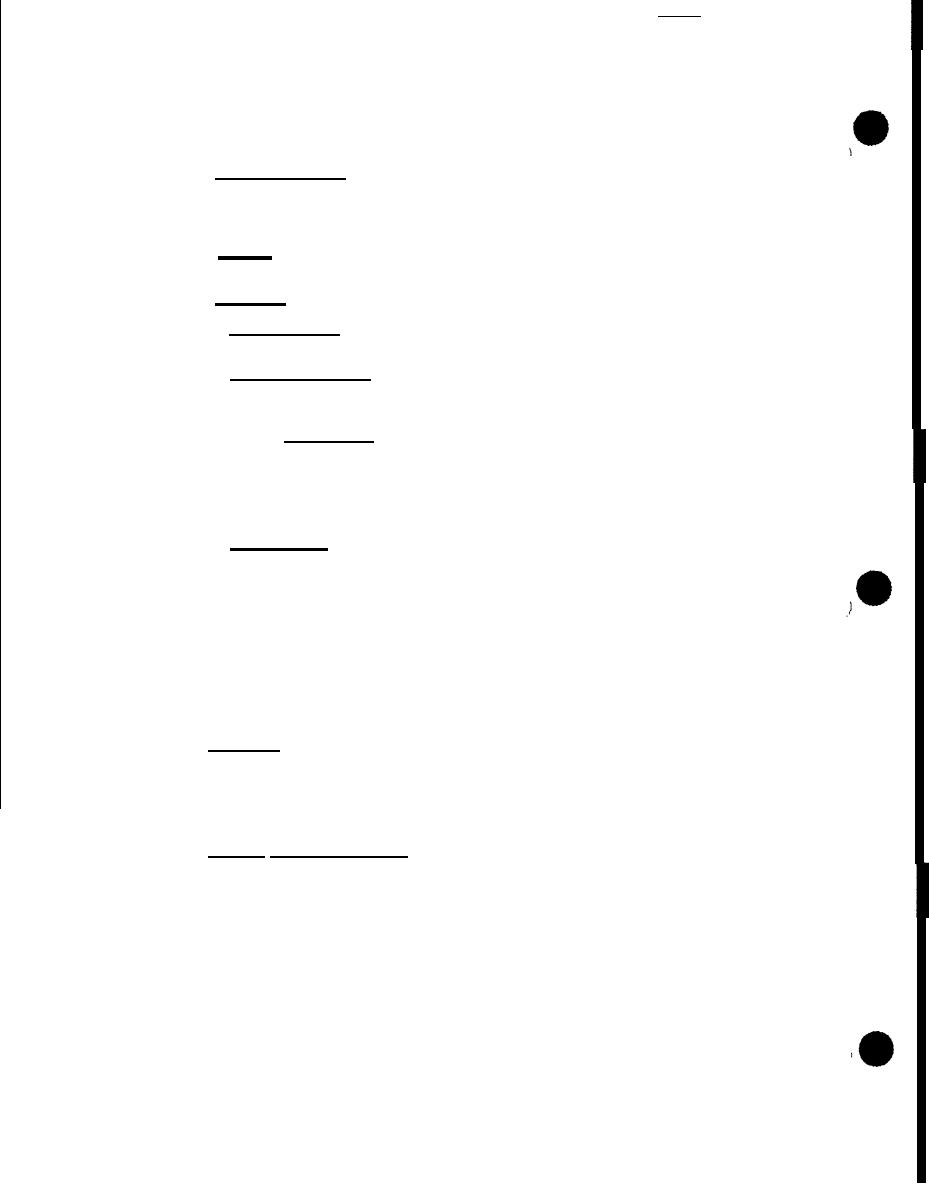 |
|||
|
|
|||
| ||||||||||
|
|  MIL-H-8890(ASG)
3.4.2 Temperature range.- The component shall be capable of full perform-
ance with the fluid at any temperature throughout the range of -20 F to +450 F
o
and shall start to operate at a temperature of -65 F. The component 0shall
o
operate satisfactorily within the range of ambient temperature of -65 to +630 F.
3.4.3 Altitude. - The altitude pressure range shall be sea level to 100,000
feet.
3.4.4 Pressures.-
3.4.4.1 Rated pressure .- The rated hydraulic pressure of the component
shall be specified. in the detail specification.
3.4.4.2 Operating pre ssure .- The component shall be designed to insure
satisfactory operation and life throughout the operating pressure range specified
In the detail specification with 150-percent peak impulse pressures.
3.4.4.3 Proof and burst pressure .- The component shall be designed to with-
stand the proof and burst pressure requirements of the table titled "Operating
pressures, psi" of Specification MIL-H-8891; or as specified in othe detail speci-
fication within the fluid and ambient temperature range of -65 F to +450F after
being fatigned and temperature aged for a period equivalent to that experienced
during the life of the component.
3.4.5 Surge pressures. - Components shall be designed so as to not induce
surge pressures in excess of 135 percent of the maximum operating pressure speci-
fied in the detail specification, when tested in a system and under test condi-
tions as specified in the detail specification.
3.4.6 Threads. - Except where necessary for functional or manufacturing
purposes, only straight threads conforming to Unified Fine Thread Series, classes
UNF-3A or UNF-3B of specification MIL-S-7742 shall be used. Pipe threads shall
not be used.
3.4.7 Seals. - All static and dynamic seals shall be of metallic construc-
tion or equivalent. Elastomeric sealS shall not be used.
3.3.8 safetying .- All threaded parts shall be securely locked or safetied
by safety wiring or other approved methods. Safety wire shall be applied in
accordance with the practice outlined in standard MS33540 and shall conform to
Standard MS20995. Lockwashers and star washers shall not be used. Safety wire
shall not be used for threaded parts required to maintain on accurate position
or torque.
3.4.3 Function-adjustment screws. - Function-adjustment screws, if used,
shall be so designed and construed as to maintain adjustment under all the
required conditions of vibration, temperature, and operation. Friction-type
locking devices shall be kept to a minimum. If friction type is used, the adjust -
ment screws shall maintain their setting after adjusting through the full range
15 times and then vibration tested. It shall be possible to adjust and lock the
adjustable screws with a standard wrench or screw driver.
4
|
|
Privacy Statement - Press Release - Copyright Information. - Contact Us |